I Have To Get Skinny Because There's Nothing I Can Do About The Fact That:
I have to get skinny because there's nothing I can do about the fact that:
I don't have a beautiful face
I'm not exceptionally talented at anything
I grew up poor and don't have cool vacations or life experiences to make me interesting
Trauma has made me a really boring person who's been stuck in survival mode their whole life and therefore doesn't have a cool personality
But if I was skinny. If I was skinny there would be at least ONE cool thing about me. At least one thing for people to wish they were me over. At least one thing for people to feel envious of me for. At least one thing about me that would be loveable.
More Posts from Ignaciovanburen and Others
This is only for the five people out there also obsessed with these two niche games too but Disco Elysium and Pathologic are basically the same game conceit taken it exactly opposite directions. Both games are about being an outsider coming into a small, weird town and trying to solve an increasingly dangerous problem on a time limit of a little over a week, which is mostly accomplished by talking to every weirdo in town until they finally do what you want. Which is a *very* specific premise to have in common! But it’s kinda incredible how swapping one mechanic dramatically changes each of the game’s vibes.
In Disco Elysium, time only progresses when you talk to people, and only if you are hearing new dialogue. With that, and the fact it’s really hard to not progress the story even if you avoid the main plot, you will inevitably be able to complete about everything the game has to offer for a single playthrough before the time limit. You have to go out of your way to be a bad detective to fail. The decision of what to do on any given day is largely dependent on whatever happens to be compelling to the player, and having to run around the far side of town doesn’t risk getting people killed.
Conversely, in Pathologic, an inversion of that aforementioned game mechanic creates a MASSIVELY different play style. Time is always progressing in Pathologic, outside of dialogue and save menus. The game is a routing simulator disguised as a psychological horror. You have two hours to talk to eight people on opposite sides of the map with about five different modifier potentially altering your optimal way of getting through town (are you hungry? do you need more bottles? is the district infected? etc.). There is NO fuck around time, maybe if you’re lucky you can take ten seconds to stare at the Polyhedron, but that’s about it.
It just stuck out to me as a case of how one technically minor change in a gameplay mechanic can entirely alter how you interact with the world. Sure, there’s a lot of other differences between the two, but this one change felt like a condensation of how each chooses to approach their premise.








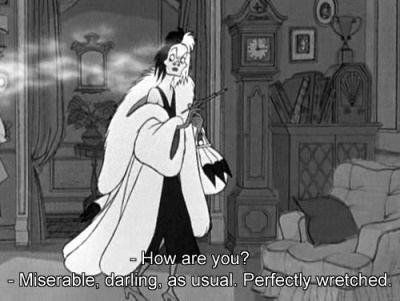


went for a walk and this is where my phone died and i had to walk 40 minutes back home without being able to take pictures
but it’s a ✨ choice ✨
perfume genius <3!!!








Various poster designs for films: DAISIES (1966, dir. Věra Chytilová), MAGNOLIA (1999, dir. Paul Thomas Anderson), DERSU UZALA (1975, dir. Akira Kurosawa), GIVE HER THE MOON (1970, dir. Philippe de Broca), GUMMO (1997, dir. Harmony Korine), MEAN STREETS (1973, dir. Martin Scorsese), THE ARISTOCATS (1970, dir. Wolfgang Reitherman) and NORTH BY NORTHWEST (1959, dir. Alfred Hitchcock).


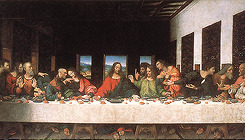






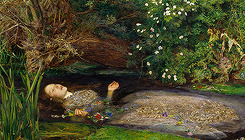
Film meets Art (original video)
“Adventures of Baron Munchausen” (dir. Terry Gilliam) and “The Birth of Venus” (artist Sandro Botticelli)
“Inherent Vice” (dir. Paul Thomas Anderson) and “The Last Supper” (artist Leonardo da Vinci)
“Days of Heaven” (dir. Terrence Malick) and “Christina’s World” (artist Andrew Wyeth)
“Heat” (dir. Michael Mann) and “Pacific” ( artist Alex Colville)
“Melancholia” (dir Lars von Trier) and “Ophelia” (artist John Everett Millais)
















Kim Novak during the filming of ‘Vertigo’ (1958).
15 reasons to build an herb spiral for your garden (By Jean Bardot, Natural News)

(By Jean Bardot, Natural News)
Whether you’re a city mouse or a country mouse — with a high-rise patio or 1000 acres — building an herb spiral near your kitchen allows you to partake in the sustainable permaculture revolution and have fresh organic culinary herbs at your fingertips. An herb spiral is a compact vertical garden built on specific principles allowing for individualized management of wind and water flow to create the ideal garden in a limited amount of space.

The spiral is a natural form that provides an efficient method for managing space, storing and sorting. Using the natural universal design of a spiral, the forces of gravity and water flow are utilized to their fullest allowing for proper drainage downhill. Herbs that thrive on drier soils live at the top, whereas those needing more moisture reside at the bottom where water collects. This form allows for planting of a widely diverse number of plants, and creates natural, sunny and shady areas — a perfect miniature microclimate landscape environment. The herb spiral as a permaculture form that allows you to create your own ecosystem and become self sufficient. The format can be adapted to large gardens if space is available.
Stone or block building materials allow for retention of heat and insulate plants in colder weather or at night, while acting as the backbone for the structure. Collect water at the bottom and have a small fish or frog pond or even a bog and grow edible water plants. An herb spiral can be built even on a concrete foundation and filled with the richest biodynamic, organic earth to support any plants included.

The spiral should always be built to move in the direction of water drainage in whatever hemisphere it’s located in — for example, in the Northern hemisphere, water runs off in a clockwise direction and the opposite is true for the Southern hemisphere. This allows for optimal positioning of the pond at the bottom and reduces evaporation. The spiral can be built as a round or oval shape to take advantage of the movement of summer sunlight.
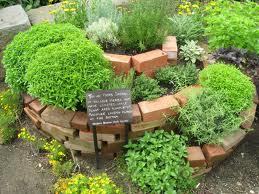
15 REASONS TO BUILD AN HERB SPIRAL FOR YOUR PERMACULTURE GARDEN
1. Maximize growing space to grow more food. 2. Multiple microclimates available for optimal plant growth.
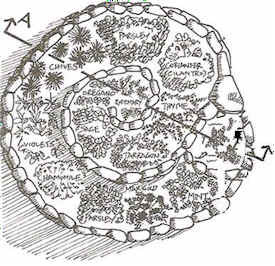
3. Healthier plants where growing needs are met and companion planting is easy to reduce insect problems and foster beneficial plant relationships for better growth. 4. Aesthetic garden focal point.

5. Maximizes space even in very small areas on top of concrete or in high-rise buildings. 6. Harvesting access is easy and all plants are effortlessly accessible. 7. No bending, everything is at waist height — hooray!

8. Save money by growing your own food. 9. Eat organic, using heirloom seeds and avoid pesticides and genetically engineered seeds. 10. Reduces maintenance, little weeding and easy to turn and mulch.

11. Manage water amounts and use natural forces to perpetuate the growing season. 12. Reduce building costs when you use local available materials. 13. Use drip irrigation or a small sprinkler for easy watering and irrigation.

14. Create a bio-diverse habitat for creatures who come to visit. 15. Build an herb spiral to grow medicinal herbs to avoid Big Pharm drugs.
Sources for this article: http://www.mitra.biz http://themicrogardener.com http://welcometovoluntarysimplicity.wordpress.com http://www.mysquarefootgarden.net/creating-an-herb-spiral/
-
 diaphanous-eve liked this · 3 months ago
diaphanous-eve liked this · 3 months ago -
 v4mp1r3-bl00d liked this · 9 months ago
v4mp1r3-bl00d liked this · 9 months ago -
 wannabeklister liked this · 9 months ago
wannabeklister liked this · 9 months ago -
 traphousespermicide liked this · 9 months ago
traphousespermicide liked this · 9 months ago -
 tired-gray liked this · 9 months ago
tired-gray liked this · 9 months ago -
 glitterynighttragedy liked this · 10 months ago
glitterynighttragedy liked this · 10 months ago -
 angelbl-00-d reblogged this · 10 months ago
angelbl-00-d reblogged this · 10 months ago -
 angelbl-00-d liked this · 10 months ago
angelbl-00-d liked this · 10 months ago -
 greenteac0re reblogged this · 10 months ago
greenteac0re reblogged this · 10 months ago -
 greenteac0re liked this · 10 months ago
greenteac0re liked this · 10 months ago -
 pillango-arny liked this · 10 months ago
pillango-arny liked this · 10 months ago -
 deitvanillasoda liked this · 10 months ago
deitvanillasoda liked this · 10 months ago -
 book-of-my-heart-pt2 liked this · 10 months ago
book-of-my-heart-pt2 liked this · 10 months ago -
 inviluna liked this · 11 months ago
inviluna liked this · 11 months ago -
 funnyvalentinesstuff liked this · 11 months ago
funnyvalentinesstuff liked this · 11 months ago -
 capybihh liked this · 1 year ago
capybihh liked this · 1 year ago -
 196-110 liked this · 1 year ago
196-110 liked this · 1 year ago -
 bittersweetemt liked this · 1 year ago
bittersweetemt liked this · 1 year ago -
 elykozume liked this · 1 year ago
elykozume liked this · 1 year ago -
 spiderwebdelicate reblogged this · 1 year ago
spiderwebdelicate reblogged this · 1 year ago -
 0032c liked this · 1 year ago
0032c liked this · 1 year ago -
 digupherrboness liked this · 1 year ago
digupherrboness liked this · 1 year ago -
 gojoscumbucket69 liked this · 1 year ago
gojoscumbucket69 liked this · 1 year ago -
 r4wt liked this · 1 year ago
r4wt liked this · 1 year ago -
 iw4nn4b3sk1111nnnyyyy liked this · 1 year ago
iw4nn4b3sk1111nnnyyyy liked this · 1 year ago -
 weepinganagel liked this · 1 year ago
weepinganagel liked this · 1 year ago -
 weepinganagel reblogged this · 1 year ago
weepinganagel reblogged this · 1 year ago -
 thinspoandfo reblogged this · 1 year ago
thinspoandfo reblogged this · 1 year ago -
 the-wayward-sister liked this · 1 year ago
the-wayward-sister liked this · 1 year ago -
 skinnywish00098 reblogged this · 1 year ago
skinnywish00098 reblogged this · 1 year ago -
 xobrooklynbaby liked this · 1 year ago
xobrooklynbaby liked this · 1 year ago -
 budgetbones reblogged this · 1 year ago
budgetbones reblogged this · 1 year ago -
 gay-for-fingerless-gloves liked this · 1 year ago
gay-for-fingerless-gloves liked this · 1 year ago -
 guiltycrown09 liked this · 1 year ago
guiltycrown09 liked this · 1 year ago -
 squidjuicee liked this · 1 year ago
squidjuicee liked this · 1 year ago -
 cutesih-ot liked this · 1 year ago
cutesih-ot liked this · 1 year ago -
 datafucker420 liked this · 1 year ago
datafucker420 liked this · 1 year ago -
 gentlethegarden liked this · 1 year ago
gentlethegarden liked this · 1 year ago -
 flamingsmoke liked this · 1 year ago
flamingsmoke liked this · 1 year ago -
 forever-broken1997 liked this · 1 year ago
forever-broken1997 liked this · 1 year ago -
 incomingmanicepisode reblogged this · 1 year ago
incomingmanicepisode reblogged this · 1 year ago
